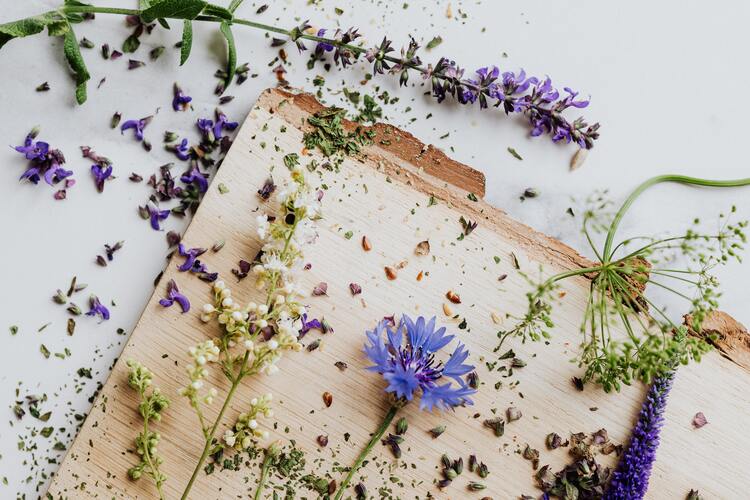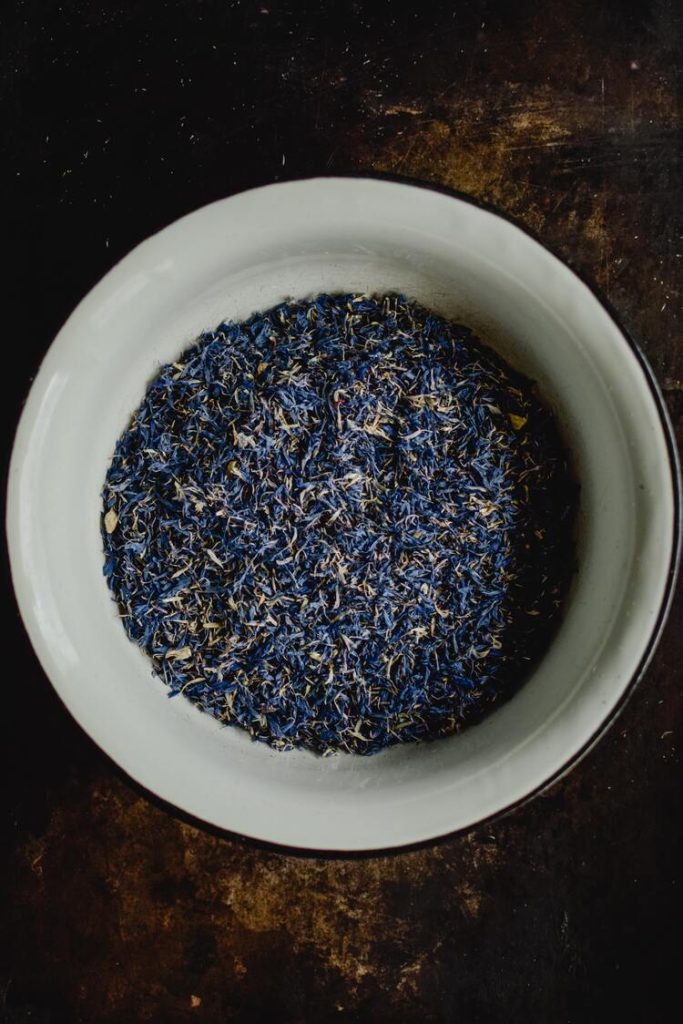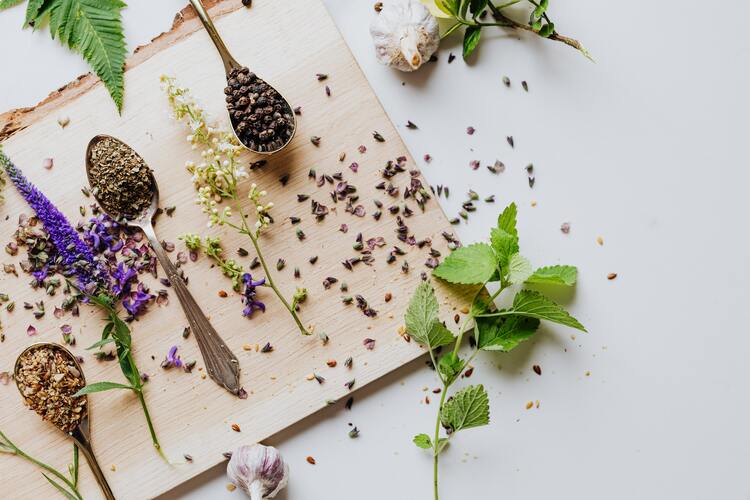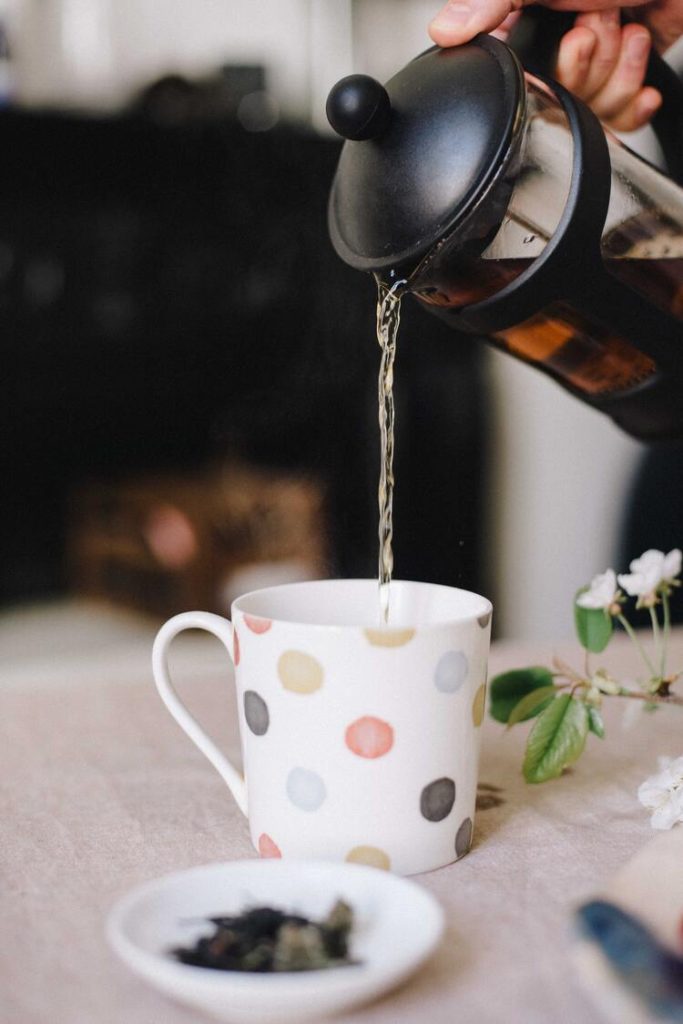You might have heard of Earl Grey, the classic and beloved tea blend, but have you tried its floral twist, French Earl Grey? Tea enthusiasts worldwide are branching out from traditional tea choices and embracing this delightful blend. Combining the unmistakable notes of Earl Grey with a touch of French flair, this tea is steadily gaining popularity among those looking for a remarkable flavor.
French Earl Grey blends high-quality black tea, bergamot oil, and a medley of flower petals.
Keep reading to learn more about this blend that elevates a classic to new and exciting heights.
Please note: This article contains affiliate links, meaning I may earn a commission if you make a purchase by clicking a link. Of course, this comes at no extra cost to you and helps me keep offering readers solid information.

The Origin of Earl Grey Tea
The story of French Earl Grey tea has its roots in the famous Earl Grey tea.
Earl Grey tea is a flavored black tea characterized by its distinctive citrusy aroma and flavor, primarily derived from adding bergamot oil. Bergamot is a type of citrus fruit that is grown mainly in Southern Italy.
The exact origin of Earl Grey tea is a subject of debate, and there are several theories about how it came to be.
One popular legend attributes the creation of Earl Grey tea to Charles Grey, the 2nd Earl Grey and Prime Minister of the United Kingdom from 1830 to 1834. According to this story, a Chinese high-ranking government official presented the blend to Earl Grey as a gift, possibly in gratitude for the rescue of a compatriot.
The blend of tea infused with bergamot oil was said to have been specially formulated to offset the strong, mineral-like flavor of the local water at Howick Hall, the Grey family’s estate in Northumberland.
Another theory suggests that the blend was created by a Chinese tea master who added bergamot oil to tea to create a flavor profile favored by European consumers. This blend eventually made it to England and became associated with the Earl Grey.
While the exact origin story remains somewhat uncertain, what is clear is that Earl Grey tea has been a popular and well-loved tea variety for many years.
What Makes French Earl Grey Unique?
What sets French Earl Grey apart from its British counterpart is the addition of floral elements like rose petals, mallow flowers, and blue cornflower. Sometimes, other botanicals like lavender or hibiscus are added.
French Earl Grey may also include fruit flavors, such as dried orange peel or other fruit pieces, which can add a subtle fruity sweetness to the tea. This is less common in traditional Earl Grey.
In terms of flavor, French Earl Grey tends to have a more complex and layered flavor profile compared to the relatively straightforward citrus notes of traditional Earl Grey. The floral and fruity elements create a more aromatic and nuanced taste experience.
French Earl Grey tea can be visually distinguished by the added petals and fruit pieces, which give it a colorful and visually appealing appearance compared to the plain black tea leaves of traditional Earl Grey.
Now, you should understand the difference between French and traditional Earl Grey. Keep in mind there is no standard list of ingredients for French Earl Grey. Because of this, products marketed under this name vary. Make sure you read the list of ingredients before buying.

Brewing French Earl Grey
Here’s how to brew a cup of French Earl Grey tea:
Ingredients
- French Earl Grey tea leaves
- Fresh, filtered water
- Optional: Milk, honey, or sweetener of your choice
Equipment
- Tea infuser or teapot
- Teacup or mug
- Kettle or pot for boiling water
- Timer
Steps
- Boil Water: Start by boiling fresh, cold water. Ideally, use water just under boiling, typically around 200°F (93°C). Avoid using boiling water, as it can scald the tea leaves and result in a bitter taste.
- Preheat Teapot or Teacup: If you’re using a teapot, pour a small amount of hot water into it to preheat it. Swirl the hot water around and then discard it. This helps maintain the temperature of the tea during steeping.
- Measure Tea Leaves: Depending on your preference for tea strength, measure about 1 teaspoon of French Earl Grey tea leaves for every 8 ounces (240 ml) of water. Adjust the amount to suit your taste.
- Place Tea Leaves in an Infuser or Teapot: If you’re using a tea infuser, put the measured tea leaves into the infuser. Place the leaves directly into the teapot if you’re using a teapot.
- Pour Hot Water: Carefully pour the hot water over the tea leaves in the infuser or teapot. Ensure that all the tea leaves are submerged in the water.
- Steep Time: Set a timer for the recommended steeping time, typically around 3-5 minutes for black tea. Keep in mind that steeping time may vary based on personal preference and the specific blend you’re using. A shorter steeping time will yield a milder flavor, while a longer steeping time will result in a stronger, more robust flavor.
- Cover and Steep: Cover the teapot or place a lid on the tea cup or mug to help retain heat and aroma. Let the tea steep for the designated time.
- Remove Tea Leaves: After the steeping time is up, remove the tea leaves from the water to prevent oversteeping, which can make the tea taste bitter.
- Optional Additions: You can enjoy the tea plain or add milk, honey, or sweetener to taste, depending on your preference. French Earl Grey is often enjoyed without milk, as the floral and citrus notes are quite delicate.
- Sip and Savor: Your tea is now ready to enjoy. Please take a moment to savor its complex and aromatic flavors.
Remember that the exact brewing process may vary slightly depending on the brand and type of tea you’re using, so it’s a good idea to check the packaging or consult the tea supplier for any specific brewing recommendations.
Diverse Types and Variants
As a tea lover, you’ll appreciate the diverse range of Earl Grey variations, including the French twist. Some other types to explore include:
Lady Grey: This variation of Earl Grey tea typically includes additional ingredients such as lemon peel, orange peel, and bergamot oil. It’s known for its lighter and more citrusy flavor than traditional Earl Grey.
Decaffeinated Earl Grey: Decaffeinated versions are available for those who want to enjoy the flavor of Earl Grey without the caffeine. They are often made using a decaffeinated black tea base.
Green Earl Grey: Green tea leaves are used instead of black tea as the base for this variation. It offers a milder, grassier taste with the same bergamot aroma.
Earl Grey with Lavender: Lavender buds are added to Earl Grey tea to create a soothing and aromatic blend. The floral notes of lavender complement the citrusy bergamot flavor.
Cream Earl Grey: This variation combines the classic Earl Grey with a creamy twist. It often includes ingredients like vanilla or cream flavoring to give the tea a smoother and richer taste.
Earl Grey with Jasmine: Jasmine flowers are added to Earl Grey tea, infusing it with jasmine’s delicate and floral aroma. This combination offers a unique and fragrant taste experience.
Earl Grey Rooibos: Instead of using traditional tea leaves, Rooibos (a caffeine-free herbal tea) is the base for this variation. It’s a good choice for those seeking a caffeine-free Earl Grey option.
Earl Grey with Mint: Peppermint or spearmint leaves are added to Earl Grey tea to create a refreshing and invigorating blend. The mint complements the citrus notes of bergamot.
Bergamot Herbal Blends: Some herbal tea blends incorporate bergamot flavor without using traditional tea leaves. These caffeine-free blends often include chamomile, lemongrass, or hibiscus for a soothing and aromatic infusion.
Custom Blends: Many tea companies and shops offer custom Earl Grey blends where you can choose the type of tea base (black, green, oolong, etc.) and additional flavorings or botanicals to create a personalized Earl Grey experience.

Health Benefits and Concerns
French Earl Grey, like most teas, offers several health benefits:
- Antioxidants help protect your body against free radicals.
- Flavonoids, which may support heart health.
- Caffeine for a gentle energy boost.
- Hydration, as tea, serves as a source of fluids.
However, if you’re sensitive to caffeine or have certain health conditions, it’s always a good idea to consult your doctor before indulging in this fragrant tea.
Buying Recommendations
If you want to purchase this tea online, please take into consideration the following recommendations:
Mariage Freres. Earl Grey French Blue Tea

MARIAGE FRERES. Earl Grey French Blue Tea, 100g Loose Tea

Capital Teas French Lavender Earl Grey Tea


For the best Earl Grey tea, you can check out our dedicated article.
Frequently Asked Questions
What makes French Earl Grey unique?
French Earl Grey is a twist on the traditional Earl Grey tea. What sets it apart is the addition of floral ingredients like rose petals, lavender, and sometimes cornflowers. These ingredients give the tea a more vibrant flavor and a distinctive aroma.
How does French Earl Grey taste compared to regular Earl Grey?
Compared to regular Earl Grey, which has a bold and slightly citrusy taste due to the bergamot oil, French Earl Grey has a more delicate and floral taste. The added ingredients create an intricately layered flavor profile that balances the robustness of black tea with the gentle notes of flowers.
Can I add milk to French Earl Grey tea?
While you can certainly add milk to your tea, it masks the delicate flavors of the floral ingredients. If you still prefer to have milk, consider using only a small amount to preserve the unique taste.
What are the potential side effects of French Earl Grey?
As a black tea, French Earl Grey contains caffeine, which can cause side effects such as increased heart rate, jitteriness, or insomnia if consumed in large amounts. If you’re sensitive to caffeine, consider limiting your intake or opting for a decaffeinated version.
Which brands offer the best French Earl Grey teas?
Some popular brands offering French Earl Grey teas include Dammann Frères, Mariage Frères, and Twinings. However, the “best” French Earl Grey is subjective, and you may find other brands that suit your taste preferences better. Don’t be afraid to explore different options to find your favorite.
What ingredients are commonly found in French Earl Grey blends?
In addition to black tea and bergamot oil, French Earl Grey blends often include rose petals, lavender, and cornflowers. Some versions may also contain other floral or fruit elements, creating a unique flavor experience. Always check the ingredient list when purchasing this to ensure it includes the flavors you enjoy.

I hope you have enjoyed the article and learned something new! See you next time!
Have you tried this tea?
More About Black Tea
The Process of Making Black Tea
What Does Black Tea Taste Like?
What Does Assam Tea Taste Like?